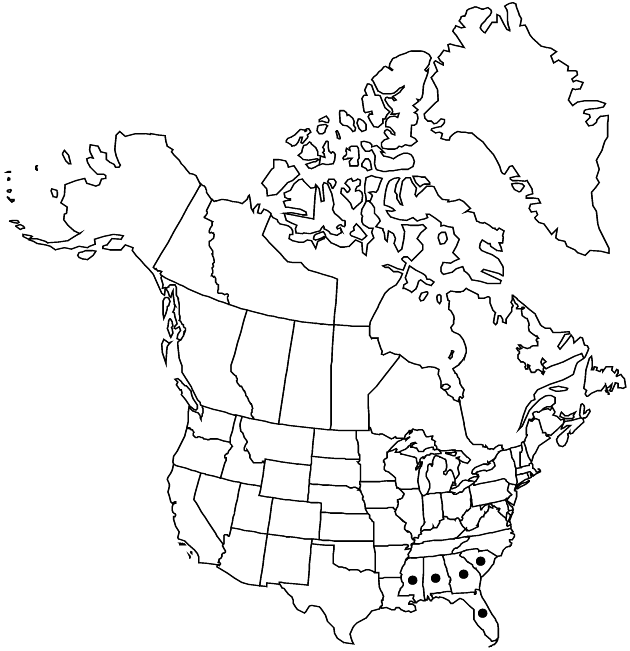Difference between revisions of "Liatris gracilis"
Fl. Amer. Sept. 2: 508. 1813.
FNA>Volume Importer |
imported>Volume Importer |
||
| (5 intermediate revisions by 2 users not shown) | |||
| Line 8: | Line 8: | ||
}} | }} | ||
|common_names=Slender gayfeather | |common_names=Slender gayfeather | ||
| + | |special_status={{Treatment/ID/Special_status | ||
| + | |code=F | ||
| + | |label=Illustrated | ||
| + | }}{{Treatment/ID/Special_status | ||
| + | |code=E | ||
| + | |label=Endemic | ||
| + | }} | ||
|basionyms= | |basionyms= | ||
|synonyms={{Treatment/ID/Synonym | |synonyms={{Treatment/ID/Synonym | ||
|name=Lacinaria gracilis | |name=Lacinaria gracilis | ||
|authority=(Pursh) Kuntze | |authority=(Pursh) Kuntze | ||
| + | |rank=species | ||
}} {{Treatment/ID/Synonym | }} {{Treatment/ID/Synonym | ||
|name=Lacinaria laxa | |name=Lacinaria laxa | ||
|authority=Small | |authority=Small | ||
| + | |rank=species | ||
}} | }} | ||
|hierarchy=Asteraceae;Asteraceae tribe Eupatorieae;Liatris;Liatris gracilis | |hierarchy=Asteraceae;Asteraceae tribe Eupatorieae;Liatris;Liatris gracilis | ||
| Line 39: | Line 48: | ||
-->{{#Taxon: | -->{{#Taxon: | ||
name=Liatris gracilis | name=Liatris gracilis | ||
| − | |||
|authority=Pursh | |authority=Pursh | ||
|rank=species | |rank=species | ||
| Line 53: | Line 61: | ||
|publication title=Fl. Amer. Sept. | |publication title=Fl. Amer. Sept. | ||
|publication year=1813 | |publication year=1813 | ||
| − | |special status= | + | |special status=Illustrated;Endemic |
| − | |source xml=https:// | + | |source xml=https://bitbucket.org/aafc-mbb/fna-data-curation/src/2e0870ddd59836b60bcf96646a41e87ea5a5943a/coarse_grained_fna_xml/V19-20-21/V21_1350.xml |
|tribe=Asteraceae tribe Eupatorieae | |tribe=Asteraceae tribe Eupatorieae | ||
|genus=Liatris | |genus=Liatris | ||
Latest revision as of 21:09, 5 November 2020
Plants 20–100 cm. Corms globose to subglobose. Stems puberulent to piloso- or strigoso-puberulent. Leaves: basal and proximal cauline 1-nerved, usually linear to linear-oblanceolate or oblanceolate, sometimes narrowly spatulate, 50–150 × 2–8(–10) mm, gradually or abruptly reduced on distal 1/2–1/3 of stems, essentially glabrous (proximal margins ciliate). Heads in loose, racemiform arrays. Peduncles 0 or (usually straight, stiffly spreading to ascending) 2–10(–12) mm. Involucres cylindro-campanulate, (4–)4.5–6(–7) × 3–4(–5) mm. Phyllaries in 3(–4) series, (green to purple) ovate to oblong, strongly to weakly unequal, sparsely puberulent, margins with hyaline borders, ciliolate, apices rounded to truncate. Florets 3–6(–9); corolla tubes pilose inside. Cypselae 3–3.5 mm; pappi: lengths ± equaling corollas, bristles barbellate. 2n = 20.
Phenology: Flowering (Jul–)Aug–Oct(–Nov).
Habitat: Longleaf pine, slash pine, palmetto-scrub oak, turkey oak-bluejack oak, sand scrub, sand ridges, uplands, boggy flatwoods, sandy peat, fencerows, roadsides, woodland edges
Elevation: 10–50 m
Distribution

Ala., Fla., Ga., Miss., S.C.
Discussion
Plants of Liatris gracilis from the panhandle of Florida and the southern tier of Alabama counties tend to have sharply acute phyllaries; intermediates are often encountered.
Selected References
None.
